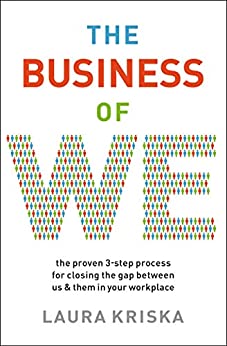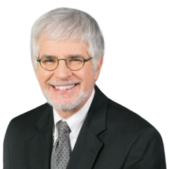
Following up on my September 16, 2021 post “Ten Takeaways From Leader to Leader Issue 101,” about the Summer 2021 issue of Leader to Leader, where I am managing editor, I’m now focusing on the Fall 2021 issue. The takeaways are from the main articles, plus each of the two ‘From the Front Lines’ articles, which are based on my interviews with important researchers about their recent work, and its importance and relevance to our readers. I’ve included links to the articles, and a brief description of each author and ‘Front Lines’ interviewee.
Who Cares? You Should.
Author: Heather R. Younger, CEO and Founder of Employee Fanatix, a leading employee engagement, leadership development, and DEI consulting firm
Article: “The Art of Caring Leadership: How Leading with Heart Uplifts Teams and Organizations”
Sample quote:
“Everyone has worked for a manager who genuinely cared for them. Equally, we can all look back at a leader who left us feeling like just a number or a small cog in a large wheel. By contrast, every leader thinks they are a caring leader, but most fall short of demonstrating care consistently to their teams. If we dare to address the elephant in the room, many employees don’t feel seen by those who are supposed to be leading them.
The caring leader makes sure to set time with their people one-on-one and listens intently to what their employees need from them to do their best work. When this type of leader is around, employees feel like they matter. They feel a deep bond with this type of leader because they feel they can be their authentic selves and are appreciated for their time, effort, and work.”
You’re probably missing out on hiring great employees
Author: Johnny C. Taylor, Jr., President and Chief Executive Officer of SHRM, the Society for Human Resource Management,
Article: “The Power of People You Overlook”
Sample quote:
“We are experiencing a population decline in the U.S. And globally, with the exception of a few countries, we’re aging. As a result, we will have fewer human resources available to achieve growth in business.
So, we have a numbers problem. A survey from McKinsey revealed that while 87 percent of executives expressed concern about a skills gap, fewer than half knew what to do about it. But you don’t need a divining rod to find talent. You need a plan to overcome both the math problem and the stigma issues.”
Get smarter about workplace collaboration
Author: Rob Cross, professor of Global Leadership at Babson College
Article: “How Successful People Thrive In A Hyper-Connected World”
Sample quote:
“Collaborative overload is insidious in that it feels good right up until it doesn’t. You feel like you are in the thick of things and that people need you. Right up until a disruption like losing a key employee, absorbing yet another role expansion or a significant other that says “no more.””
Draw a “Make it Happen” box
Author: Sabrina Horn, Founder of the public relations firm Horn Group, now part of Finn Partners
Article: “Airtight Management for Real Organizational Success”
Sample quote:
“Plans are essential, but almost all of them suffer from a bias toward linear thinking. Plans are intended to bring order to chaotic thought. The trouble is, we tend to equate order with a linear progression and chronology—a beginning, middle, and end. Plans are flat. But a flat plan will only guide a CEO so far.
Reality exists in three-dimensional space plus the fourth dimension, time. Being a leader requires you to establish yourself in time and space, spinning a lot of plates—handling multiple problems and opportunities, at their various stages, all at the same time.”
Look for wisdom in all organizational sectors
Author: Tracy Palandjian, CEO and co-founder of Social Finance, an impact investing and advisory nonprofit
Article: “How Private, Public, and Nonprofit Leaders Can Amplify Their Impact by Adopting Cross-sector Tools”
Sample quote:
“It all starts at the top. Leaders in the private, public, and nonprofit sectors have their own north stars, so to speak, but by expanding their vision to incorporate their peers’ guiding lights, they can unlock new levels of impact and lay the groundwork for transformative cross-sector collaboration.”
Communicate your mission and vision effectively
Authors: Art Johnson and Erik Beckler. Johnson is CEO, and Beckler is Chief Alignment Whisperer, of Infinity Systems, Inc., a management consulting firm
Sample quote:
“In aligned organizations, there are common frequencies at which all can communicate, no matter the favorites on the push buttons or in your profile. That common frequency is the mission and vision. Having that same channel where people can communicate effectively and with clarity provides a bridge between, say, sales, and technology where each department can lean on the common purpose and use their particular skills and capabilities to reach effective resolutions.”
Counteract the ‘Us versus them’ dynamics in your organization
Author: Laura Kriska, a cross-cultural consultant
Article: “Overcoming Us and Them Dynamics”
Sample quote:
“The great myth of the Us versus Them mentality is the belief that the only way to prioritize some people is by marginalizing others. Retaining your top performers by allocating resources to support those performers is part of any manager’s job. It rewards and incentivizes performance and reminds those top employees that they are important to the organization. But achieving this sense of importance by allowing high performers to flaunt rules or treat others poorly can have a negative impact on the whole organization.”
Recognize patterns, broaden your peripheral vision, and move forward
Authors: Steven Goldbach and Geoff Tuff; both principals at Deloitte
Article: “Provoke: How to Lead with Purpose”
Sample quote:
“The purpose of a “Provoke” mindset is to enable a series of minimally viable moves that continuously shape the trend as it unfolds. It’s unlikely that the path to provoking a better future is a smooth arc. Rather, it’s likely to require multiple small recalibrations along the way. The best strategy is a continuous learning process of aiming-acting- learning against the trend, understanding the nature of the impact you can have on a given trend and leveraging minimally viable moves to make forward progress with purpose.”
It’s never too late to become a social entrepreneur
Author: Mark L. Goldsmith, Founder and Emeritus CEO of Getting Out and Staying Out (GOSO)
Article: “How to Start a Social Entrepreneurship Venture That Changes Lives”
Sample quote:
“In 2004, I volunteered to be part of a principal for a day program in New York City in which people are sent into a city high school to talk with the students. I had asked to be assigned to the toughest school in the city and they did just that. They assigned me to the Horizon Academy that was situated in the famous Rikers Island jail.
After a long career as a business executive and entrepreneur, my experience that day was the catalyst for a not-for-profit organization that I founded soon after, Getting Out and Staying Out (GOSO). After 15 years of leading the organization, I trained a successor and recently retired as Founder and Emeritus CEO. I continue to support the organization by consulting and fundraising on their behalf.”
The future requires co-creation, not just creativity
Author: Terry Jackson, leader of JCG Consulting Group LLC
Article: “Co-Creation Leadership”
Sample quote:
“Co-creation refers to the collaboration among interested parties to create something better than either could have created on its own. The concept was made popular in 2000 by C. K. Prahalad and Venkat Ramaswamy in their Harvard Business Review article “Co-opting Customer Competence,” and in their 2004 book The Future of Competition, in which they defined co-creation as “joint creation of value by the company and the customer; allowing the customer to co-construct the service experience to suit their context.” Co-creation requires bringing the best of all our resources together to not just solve problems, but to collaborate to do things better, leaner, and more holistically.”
Knowledge Management is still misunderstood; knowledge hoarding is still common
Article: “Organizational Innovation and Knowledge Management/Knowledge Sharing“
Sample quote from Stan Garfield, former leader of the knowledge management program at HP and the communities and collaboration program at Deloitte:
“The term ‘knowledge management’ is not recognized by most people, and it is defined in many different ways by those who practice it. When I am asked what it means, I explain that knowledge management enables one part of an organization to be aware of and take advantage of what other parts of the organization have already learned and done. This prevents reinventing the wheel, avoids repeating the same mistakes, and enables better decision making.”
Sample quote from Delio Ignacio Castaneda, professor at Pontificia Universidad Javeriana, in Bogotá, Colombia:
“A blocker of knowledge sharing,” Castaneda continues, “is knowledge hoarding, which is defined as an individual’s deliberate and strategic concealment of knowledge. This occurs when a worker purposely keeps critical knowledge. The knowledge hoarder fears that the more he shares, the more he gives power away. Hoarding knowledge is a common inclination of employees in organizations where competition is promoted. It also happens when an employee perceives significant time pressure. This behavior weakens performance at an interpersonal level.”
‘Paying it forward’ in organizations
Article: “Paying it Forward and Organizational Citizenship Behavior in Today’s Workplaces“
Sample quote from Theresa Eriksson, doctoral student in industrial marketing at the Luleå University of Technology in Luleå, Sweden:
“Our work looks at if a person’s commitment to their organization predicts the likelihood that they will engage in a paying it forward behavior in the workplace. Paying it forward is a behavior that happens when a person offers another person something of social rather than financial value based on themselves having first received this type of benefit from a different person, thereby ‘paying forward’ the benefit. Organizational commitment describes the degree to which a person identifies and involves themselves with a particular organization, such as the firm at which an employee works. The main finding in our research is that the behavior of paying it forward can be predicted by an individual employee’s level of organizational commitment.”
